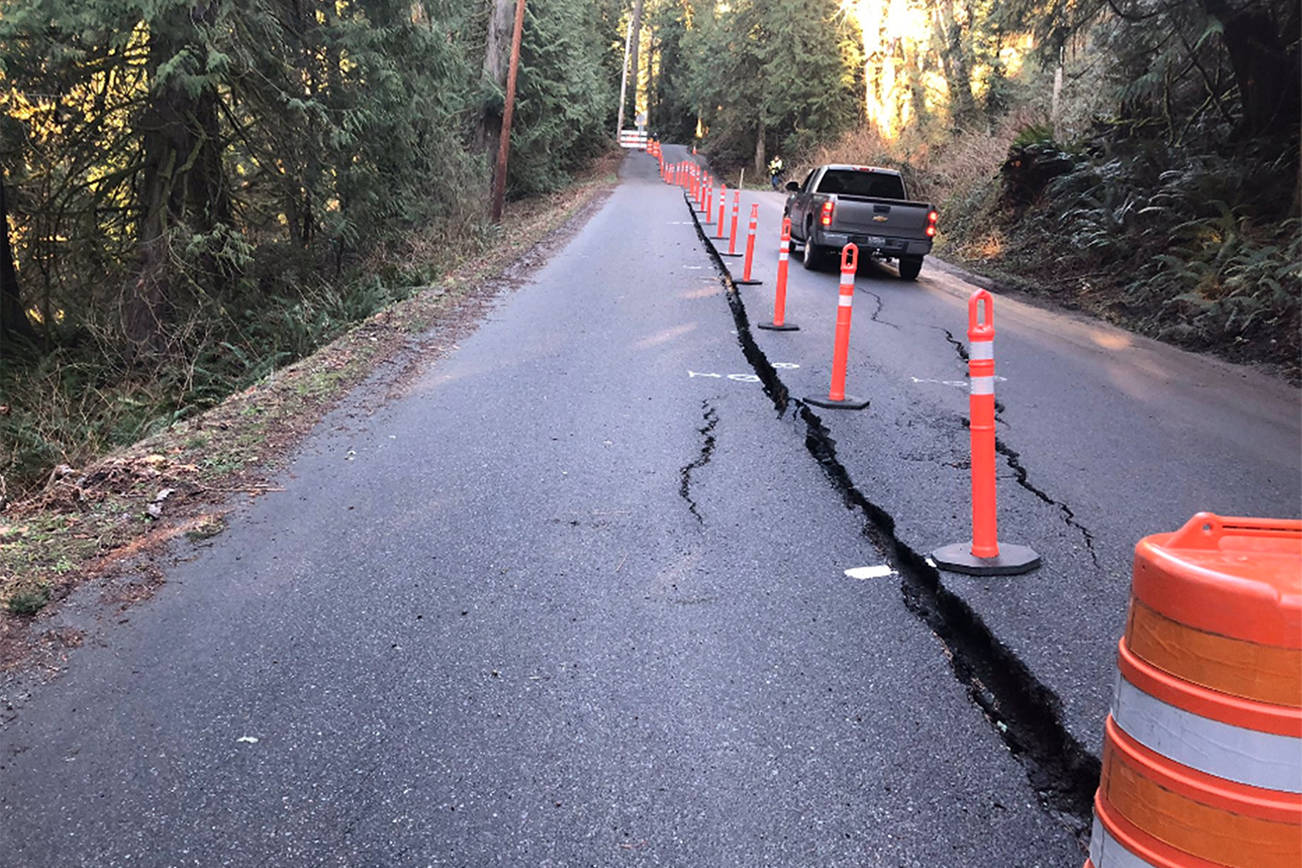Roads and bridges repair programs in King County are underfunded, and state legislators are thinking of ways to address critical infrastructure issues this session as part of their transportation funding package.
The funding shortfall in the county is nothing new, but the gap remains significant. To fully fund road and bridge maintenance and capital projects, the King County Local Services department needs roughly $350 million each year. It receives less than one-third of that, or around $100 million, each year.
The main source of this money is property taxes. But as more neighborhoods and unincorporated areas are encompassed by city limits, the county’s tax base shrinks, leaving a smaller number of people footing the bill for infrastructure projects across the county. Only about 10% of the county’s population lives outside of city limits.
The county owns and maintains 182 bridges that range in age from 10 to 100 years. These bridges supported more than 1 million trips daily in 2019, according to the last annual bridge report. Of these, 75 bridges were beyond their anticipated useful life. As bridges deteriorate, they need to be replaced or closed. And about half of those trips come from people who live in cities, instead of unincorporated King County.
County-owned roads are prominent in rural east King County and Vashon Island, but the urban unincorporated communities of White Center and Skyway are also maintained by the county.
In January, King County Metropolitan Councilmember Kathy Lambert sent out a call for constituents to ask their representatives to fund local roads and infrastructure maintenance.
The state Legislature is considering its biennial transportation budget, and Vice Chair Rep. Bill Ramos (D – 5th District) said he’s hoping to include more ways for cities and counties to fund their own infrastructure needs.
“We can’t do it all, and we cannot bail them out of the hole they’re in,” Ramos said. “There’s not enough money to do that, and there’s no way we’re going to do it for one county and not do it for the other counties.”
Instead, he’s hoping to change the way taxes are implemented and collected to let cities and counties generate money for infrastructure projects.
His proposal would double the amount of sales tax that could be collected by transportation improvement districts to 0.4%. Instead of going to a vote, the governing council or committee could implement half of that — or 0.2% — on its own. Voters would still need to approve a full use of the 0.4% tax.
Another proposed fix is to allow cities and counties to implement their own gas tax of 2.5 cents per gallon. Just like the transportation improvement district sales tax, local governments could increase the tax to a nickel per gallon if voters approve the increase. These would apply across the entire jurisdiction they were passed in, so if King County were to pass a 2.5-cent gas tax, it would apply to all cities and unincorporated parts of the county. The money would also stay in the county to fund transportation and infrastructure.
“I’m a local control kind of guy, and this is giving local control to those folks if they need it,” Ramos said.
Ramos said he hopes to include these provisions in the House transportation package. The sweeping $26 billion package came after nearly 90 listening sessions held across the state, and would guide investments over the next 16 years. The package would include $6.7 billion in new road-related investment and fully funding fish passage removals — another high-ticket item facing state lawmakers.
Lambert said she would like a list of infrastructure projects that a county gas tax would go to fund. Without it, she’s worried that the revenue would flow to cities instead of unincorporated areas of King County.
“At least the rural area would get a percentage in the formula,” Lambert said. “That’s one of my concerns, is that it doesn’t allocate the money to rural roads.”
The county could also raise property taxes to the maximum allowed under state law, or $2.25 per $1,000 of assessed property value.
A lack of funding is also a problem facing the state. In early March, Gov. Jay Inslee, along with local lawmakers, called for more funding for highway preservation. The state needs some $8.1 billion to make up its own funding gap, the Seattle Times reported.
The state Senate is considering its own version of the transportation bill. Sen. Rebecca Saldaña (D – 37th District) is the Senate’s Transportation Committee vice chair, and said they’re hoping to include extra grant funding for cities and counties in the budget.
Infrastructure maintenance can be a harder sell for voters when compared to new infrastructure or transit projects, she said.
“When we go to voters in general, people like to see new projects, even though we know that for most people preservation and maintenance — which includes bridges and roads — is actually going to make a bigger difference for most people,” Saldaña said.
The state’s budget has been impacted because of the pandemic, and ongoing projects and culvert replacement work need to continue. The real opportunity for transportation may come from programs that preserve and maintain existing infrastructure, and increasing key programs like county and rural roads grants, bus facility funds and bike infrastructure, she said.
But doubling down on those programs means they need to be included in the new transportation funding package, and come with new sources of revenue that could require some bonding and a two-thirds majority vote — meaning it needs bipartisan support. And the new revenue could come from policies like carbon pricing and gas taxes.
While generating that political will could be challenging, Saldaña said both sides of the aisle view infrastructure preservation and maintenance as important.



